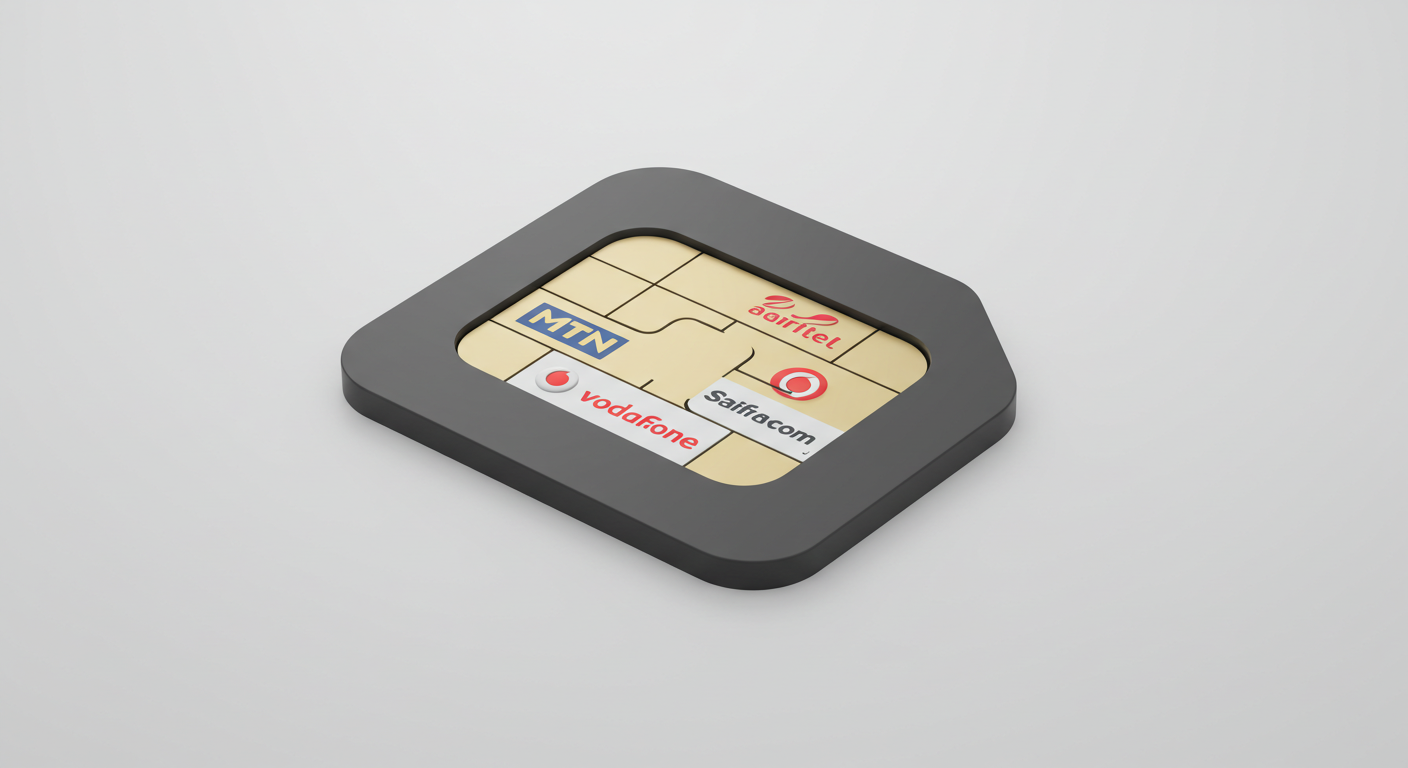It’s 2025, and if you’re still fiddling with old-fashioned plastic SIM cards, chances are you’re missing out. eSIMs — electronic SIM cards that operate without physical hardware — are finally gaining traction across Africa. If you’re abroad, working remotely, or simply tired of visiting network stores for something as mundane as changing numbers, eSIMs are a breath of fresh air.
But here’s the catch : Though eSIM technology is growing globally, a lot of people in Africa still have no idea how to buy one online. Some have no idea where to start, some are unaware of who actually offers it, and most of us worry about compatibility or additional costs.
What Is an eSIM?
An eSIM or embedded SIM is a digital SIM card that’s programmed in your phone, smartwatch, or tablet. It serves the purpose of a standard SIM card — connecting your device to a mobile network — without any plastic chip or physical change.
Picture having a new line without the trip to the store or waiting for it to arrive. You simply scan a QR code, and you’re online.
Why Care?
If you travel often, hate lines, or like convenience, then eSIMs are your go-to. They’re especially useful in countries with slow customer care services or where traditional SIM registration is cumbersome. With an eSIM, you can:
- Switch among data plans in seconds
- Avoid roaming fees on the go
- Have multiple numbers on one device
- Buy a mobile plan from anywhere — even your bed
How To Buy an eSIM Online in Africa — Step-by-Step
Let’s break it down into practical steps that work, whether you’re in Nigeria, Kenya, South Africa, Ghana, or anywhere else on the continent.
1. Make Sure Your Phone Supports eSIM
Not all devices do. But most newer models — including the iPhone XS and above, Samsung Galaxy S20 and newer, and Google Pixel 4 and up — support eSIM.
- You can usually find out by going to your device settings:
- On iPhone: Settings > Mobile Data > Add eSIM or Add Mobile Plan
- On Android: Settings > Network & Internet > SIMs or Mobile Network
- If you see an option for adding a mobile plan via QR code, you’re good to go.
2. Choose an Authorized eSIM Provider
Now, this is where everybody gets confused. So let’s simplify things. Here are global eSIM shops based in Africa:
- Airalo – Possibly the most well-known, with affordable local and regional data plans for dozens of African countries.
- Nomad – Easy-to-use interface, flexible plans, and quick activation.
- BNESIM – Ideal for travelers requiring a world or multi-country plan.
- Holafly – Optimized for unlimited data plans in specific regions.
Local African carriers that offer eSIMs:

MTN – Available in South Africa, Nigeria, Uganda, and more. You’ll often need to visit a physical store the first time, but some now offer online activation.
Airtel – Supports eSIM in Nigeria and other countries but typically requires initial verification.
Safaricom (Kenya) – Offers eSIM for supported devices, but registration may involve paperwork.
Vodacom – Active in countries like South Africa and Lesotho, offering eSIM to postpaid and prepaid users.
3. Select a Data Plan That Fits Your Lifestyle
Generally, eSIM operators offer plans that accommodate your lifestyle — you can buy data for 7 days, 15 days, or 30 days, depending on how long you will probably need it. Prices vary based on location and data amount.
For example, if you’re going to be in Kenya for two weeks, Airalo has a 1GB plan for about $5 and a 3GB plan for about $13. Regional plans covering the whole of East or West Africa are also on offer for multi-country travelers.
4. Activate Your eSIM in Minutes
Once you’ve paid for your plan, the company will email you a QR code. Here’s how you activate it:
- Open your phone’s mobile settings
- Tap “Add eSIM” or “Add mobile plan”
- Scan the QR code
- Wait a few seconds, and you’re done
You don’t need to replace your existing SIM card unless you want to. Most smartphones today are capable of dual SIM functionality, so you can leave your primary number active while using your eSIM for data.
A Few Things to Keep in Mind.
Not all networks support calls and SMS through eSIM — some are data-only.eSIMs are typically non-returnable once activated, so check your device compatibility thoroughly before buying.
African eKYC regulations might necessitate identification, particularly when using local operators — so have your ID or passport handy.
Last Thoughts: eSIM in Africa Is Improving
The greatest advantage of buying an eSIM on the internet in Africa is that you cut out unnecessary drama — no waiting for the SIM to arrive, no lost cards, no queuing for hours at telecommunication outlets. You stay connected, anywhere you go.
While adoption is still growing on the continent, more network providers and global platforms are entering. It is no longer a matter of if and when eSIM will take off in Africa — it already has. The only remaining question now is: when do you make the switch?







One reply on “How to Buy an eSIM Online in Africa”
[…] Tuesday and comes with full interconnectivity to all major mobile network operators, making the new virtual operator ready to deliver services without […]